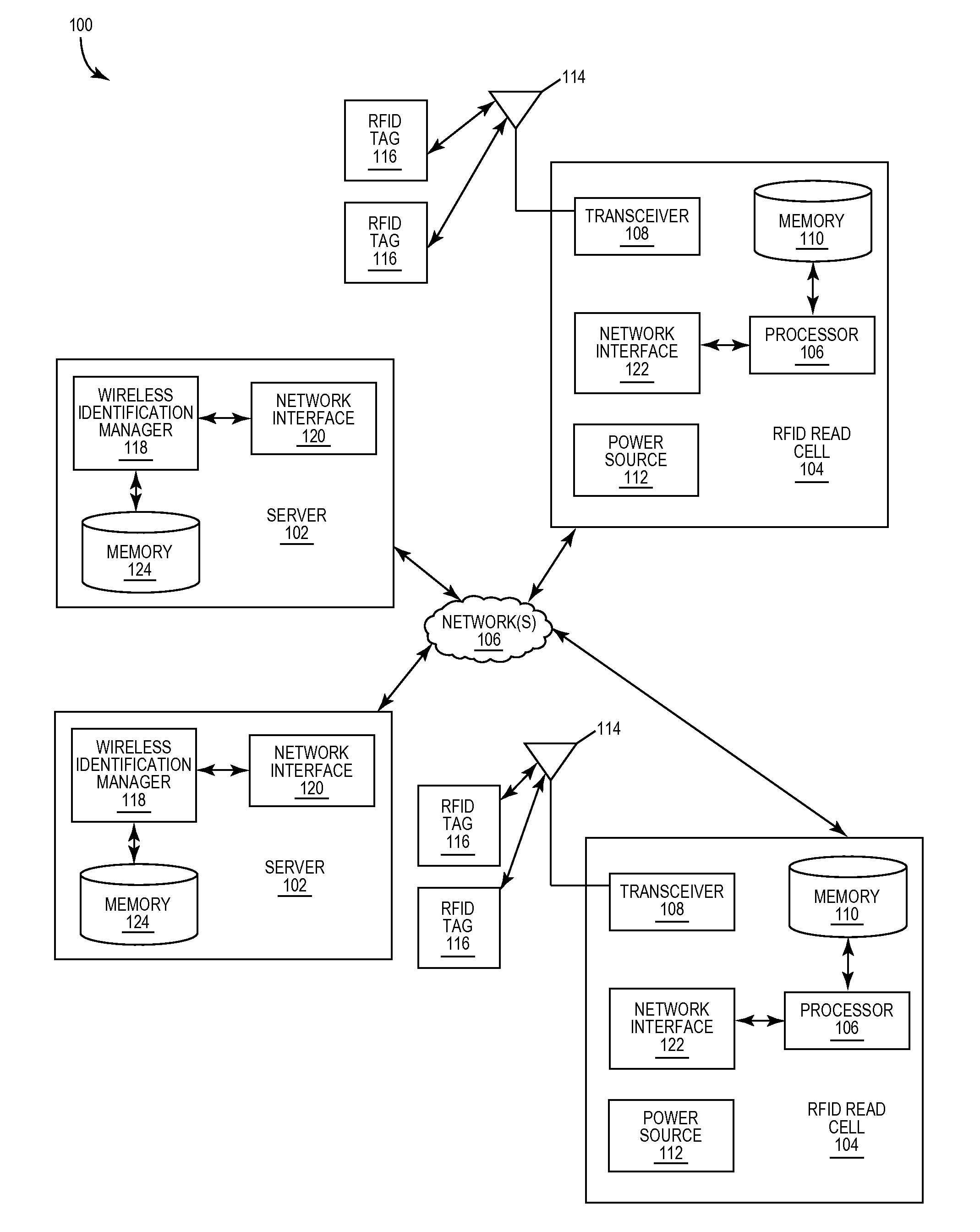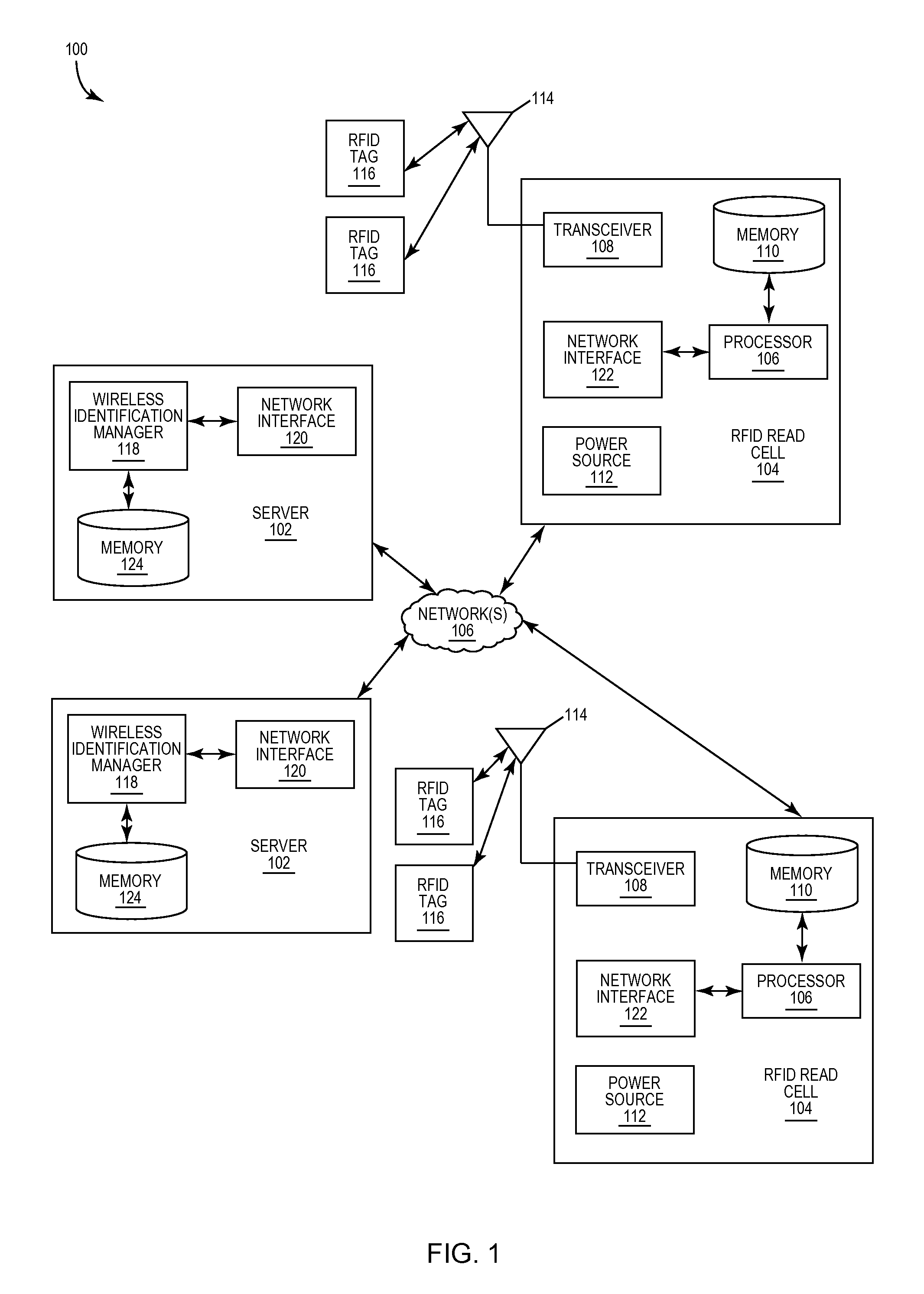Identifier sequencing of wireless identification tags
- Summary
- Abstract
- Description
- Claims
- Application Information
AI Technical Summary
Benefits of technology
Problems solved by technology
Method used
Image
Examples
Embodiment Construction
[0020]Exemplary systems and methods for identifier sequencing for wireless identification tags in accordance with embodiments of the present invention are disclosed herein. Particularly, described herein is a wireless identification tag including a communication module configured to wirelessly transmit data in response to receipt of an instruction. For example, an RFID tag may receive an activation signal from an RFID read cell. The RFID read cell may send the activation signal to the RFID tag when the RFID tag is within range of the RFID read cell. The wireless identification tag may also include a timer module configured to communicate the data to the communication module for transmission of the data. The data is transmitted within a timeslot based on a stored identifier of the wireless identification tag. For example, a timeslot for transmission of the data may be defined based on all or a portion of a currently-stored identifier of the wireless identification tag. The identifier...
PUM
 Login to view more
Login to view more Abstract
Description
Claims
Application Information
 Login to view more
Login to view more - R&D Engineer
- R&D Manager
- IP Professional
- Industry Leading Data Capabilities
- Powerful AI technology
- Patent DNA Extraction
Browse by: Latest US Patents, China's latest patents, Technical Efficacy Thesaurus, Application Domain, Technology Topic.
© 2024 PatSnap. All rights reserved.Legal|Privacy policy|Modern Slavery Act Transparency Statement|Sitemap



